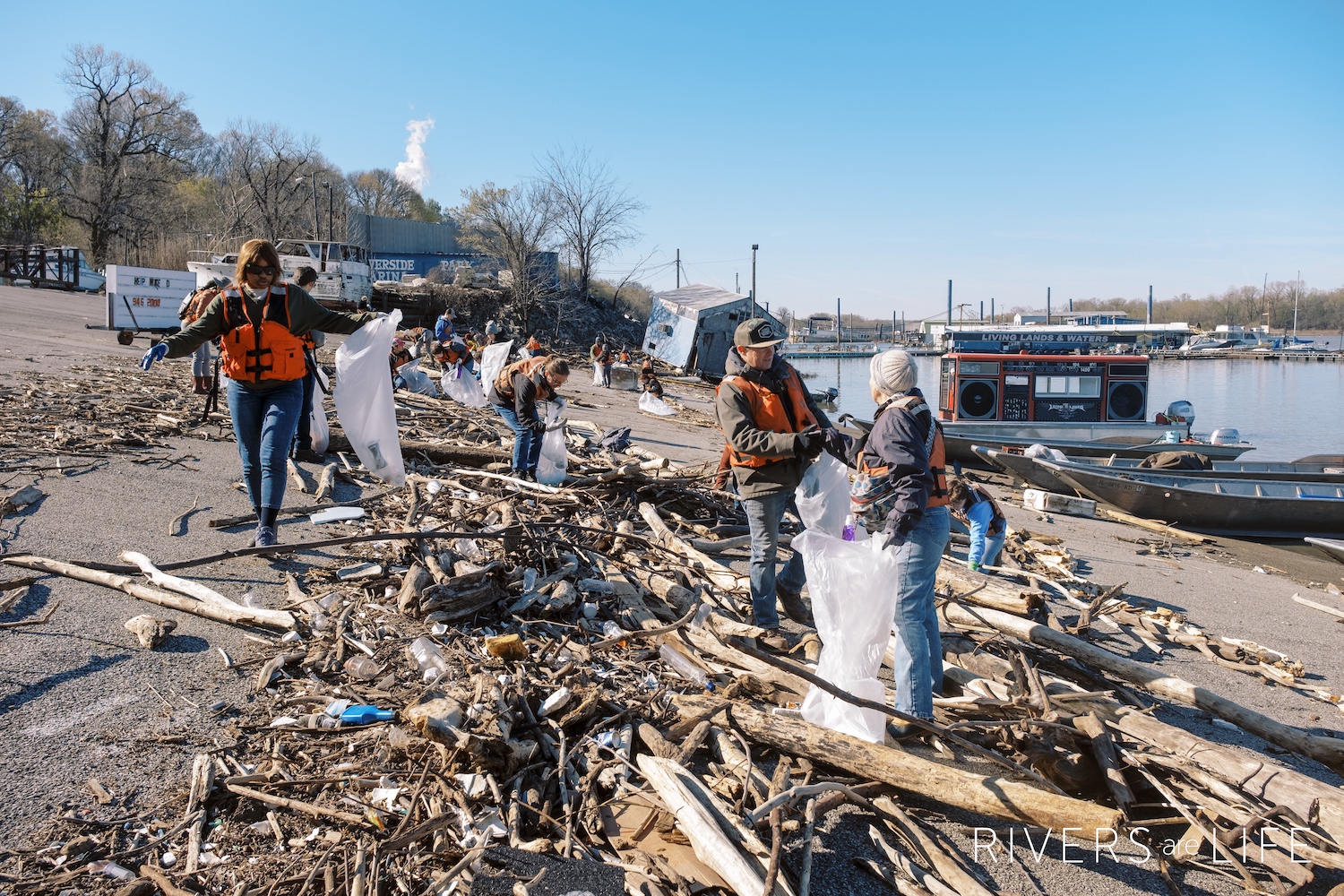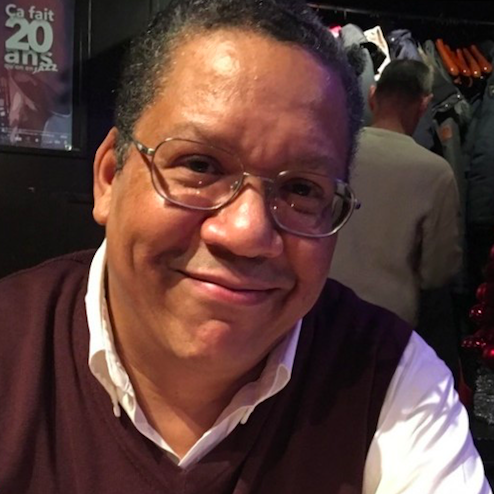
Members of Living Lands and Waters' Alternative Spring Break program have collected more than 100,000 pounds of trash from the Mississippi River every year since 2009. (Image: Rivers Are Life)
Whether it’s called “The Big Muddy,” “Old Man River,” “The Father of Waters,” or even “The Main Stream,” the Mississippi River has always been an enormous presence in American life. Ninety million people live in its watershed, and more than 60 billion gallons of fresh water is withdrawn from the river daily. Unfortunately, the biggest impact humans have on the mighty Mississippi is pollution from fertilizers, insecticides and trash — particularly single-use plastic.
For more than a decade, Living Lands and Waters, an environmental nonprofit devoted to cleaning up the Mississippi and its tributaries, has combined its efforts with education through its “floating classroom.” Based in Memphis, Tennessee, the classroom is a river barge upon which the nonprofit conducts 40-50 workshops annually, including an Alternative Spring Break program for college students. Operating nine months out of the year, the floating classroom has educated more than 24,000 students since 2012.
Even before the barge, college students from across the country converged in Memphis to clean up trash along the Mississippi and learn about the damages of pollution to the ecosystem. The Alternative Spring Break volunteers have collected more than 100,000 pounds of trash every year since 2009.
The floating classroom caught the attention of the environmental advocacy platform Rivers Are Life, which produced a short film called “Study Aboard” that chronicles Living Land and Waters’ 2023 spring break program.
Chad Pregracke, the founder and president of Living Lands and Waters, told Triple Pundit that the short film was “a perfect example of collaboration” between groups with similar aims.
“Rivers Are Life wanted to come see us in action and tell our story, which will hopefully be seen by a lot of people,” Pregracke said. “This story shows the impact that our volunteers have had and how one person can make a difference if they change their habits ever so slightly. Think of the impact if everyone watching changed one habit for the betterment of the environment. It would be huge.”
A key message the nonprofit tries to convey through the floating classroom is the importance of water conservation, he said.
“What we put in the water has a deep, long-term impact on what we eat, what we drink, and vegetation and wildlife,” Pregracke told 3p. “The sooner we all realize this we can hopefully protect our natural resources.”

Because the trash is not always easy to access, the organization’s clean-up efforts require walking along the riverbanks and picking up trash by hand or plucking debris from the rivers by boat. An excavator is used to move large objects, such as automobiles, from the riverbanks and water. Since its founding in 1998, Living Lands and Waters has harnessed the efforts of more than 126,000 volunteers in 21 states who have removed more than 13 million pounds of trash from the Mississippi, Pregracke said.
“Volunteers are the heart of our organization,” he said. “Without them we cannot do the work.”
A large majority of the 13 million pounds of trash collected is single-use plastics, 55-gallon barrels and tires, Pregracke said.
The impact of plastic pollution on the Mississippi is particularly troubling because plastics linger in the environment for centuries, causing hazards for wildlife and humans. Animals can choke on bags, balloons and straws mistaken for food. Or they can become entangled in fishing lines, the rings that hold six-packs of cans together, and other plastic trash.
This problem can’t be solved with river cleanups alone. Pregracke calls for more recycling and transitioning away from single-use plastic, too.
“Unfortunately, more single-use plastic is produced every day, which results in more being discarded,” he said.
A native of East Moline, Illinois, Pregracke spent most of his life on or near the Mississippi and one of its tributaries, the Illinois River. Between his childhood and first job as a clam digger, he soon realized he didn’t like what he saw above or below the river.
“As a teenager, I would camp on islands and go shell diving. I saw how trashed our river was, and I couldn’t stand it, so I decided to do something about it,” Pregracke said. “Anything you start from the ground up is hard. When I first started, I would go out and pick up trash from the river all day and soon realized I needed to get a boat to make a bigger impact.”
One day, while watching a NASCAR race on television, Pregracke noticed the race cars were covered with names of companies who sponsored the drivers.
“I figured, why can’t I do something like that? So, I grabbed the phonebook and started with the letter ‘A’ looking for larger companies in our area to call to see if they might be willing to donate,” Pregracke said. “From there, we just continued to grow. You will always have obstacles as you grow an organization, you just need to think outside of the box on how to overcome them.”
Over two decades after starting operations with a single boat, Living Lands and Waters’ fleet now includes four barges, two towboats, five workboats, an excavator and a crane.
“More than 18 million people get their drinking water from the Mississippi,” Pregracke said. “We know our efforts are helping provide cleaner drinking water and cleaner living conditions for both marine life and wildlife.”

Gary E. Frank is a writer with more than 30 years of experience encompassing journalism, marketing, media relations, speech writing, university communications and corporate communications.














